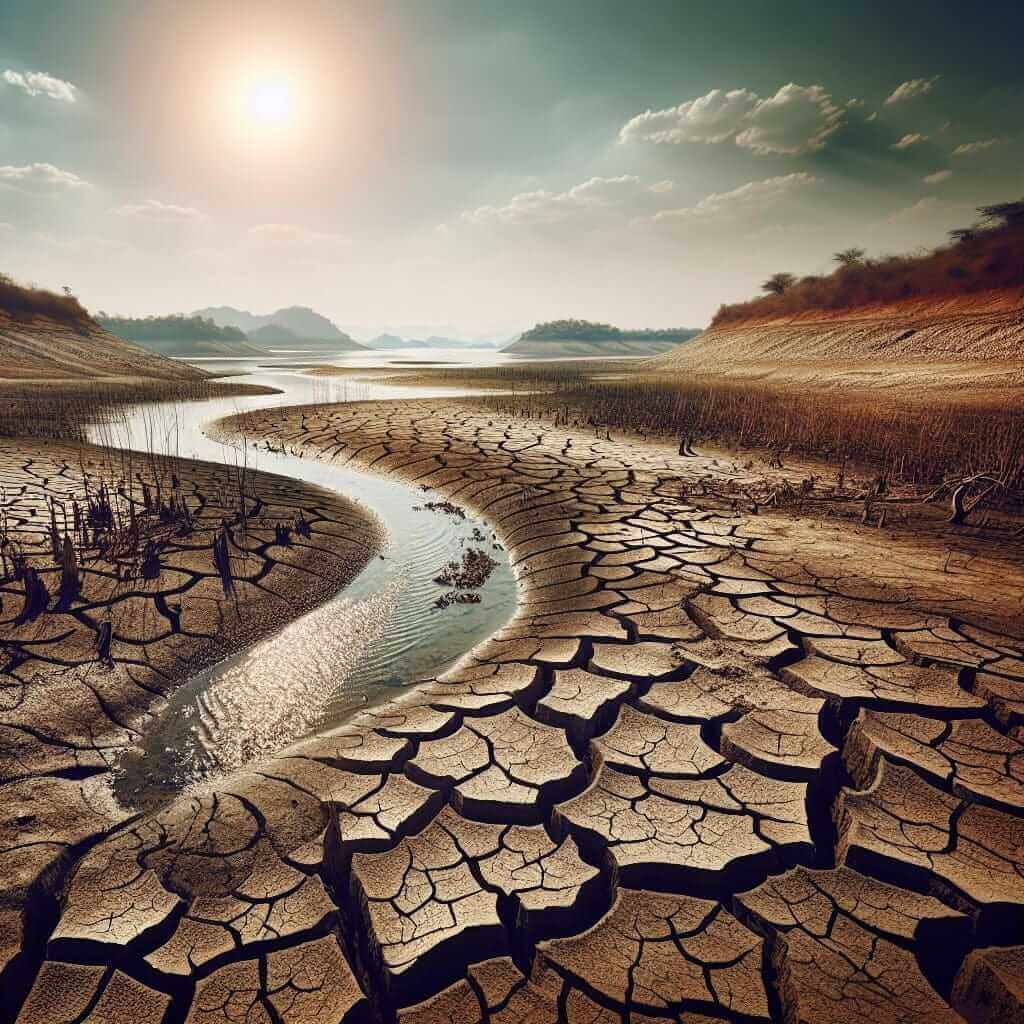The topic of climate change frequently appears in the IELTS Writing Task 2 exam, highlighting its significance in contemporary discussions and its impact on various facets of life. A crucial consequence of climate change is water scarcity, which affects ecosystems, agriculture, and human societies worldwide. Let’s explore several potential essay prompts related to this topic and analyze one in detail for a model essay.
Potential Essay Prompts
- Discuss the impact of climate change on water scarcity and suggest ways to mitigate this issue.
- How does climate change contribute to water scarcity in urban areas? Provide examples and solutions.
- To what extent do you agree or disagree that water scarcity caused by climate change will lead to global conflicts?
Selected Essay Prompt
Discuss the impact of climate change on water scarcity and suggest ways to mitigate this issue.
Analyzing the Essay Prompt
This prompt requires an examination of the relationship between climate change and water scarcity. Additionally, it asks for practical solutions to mitigate the problem. The essay should be structured into two main parts: the first part focusing on explaining how climate change exacerbates water scarcity, and the second part offering solutions.
Model Essay
Climate change, often referred to as global warming, is substantially altering the Earth’s weather patterns and contributing to water scarcity worldwide. As temperatures rise, rainfall patterns shift, and extreme weather events become more frequent, access to fresh water is increasingly threatened. This essay will discuss the impact of climate change on water scarcity and propose several measures to alleviate this issue.
One of the primary ways climate change contributes to water scarcity is through the alteration of precipitation patterns. Regions that once experienced consistent rainfall are now witnessing prolonged droughts, while other areas face excessive rainfall and flooding. For instance, the southwestern United States has seen a significant decrease in snowpack, which historically provided a steady supply of water through gradual melting. The reduction in snowpack has not only diminished surface water availability but also stressed groundwater resources.
In addition to altering precipitation, climate change increases temperatures, which in turn escalates evaporation rates from water bodies, soil, and vegetation. Higher temperatures exacerbate drought conditions and reduce the amount of water available for agricultural, industrial, and domestic use. Consequently, severe water shortages are emerging in arid and semi-arid regions, where water is already a scarce resource.
To mitigate the impact of climate change on water scarcity, several measures can be adopted. Firstly, water conservation should be promoted through public awareness campaigns and education. People must understand the importance of water-saving practices such as fixing leaks, using water-efficient appliances, and adopting water-wise gardening techniques. Secondly, investing in advanced water management technologies, such as desalination plants and wastewater recycling systems, can augment water supplies. For example, countries like Israel have excelled in using desalination to convert seawater into fresh water, providing a reliable water source even in times of drought.
Moreover, policymakers need to implement stringent regulations to manage water resources more effectively. This involves creating robust frameworks for monitoring and controlling water use, particularly in the agricultural sector, which accounts for a significant portion of global water consumption. Efficient irrigation methods such as drip irrigation should be encouraged to minimize water wastage.
In conclusion, climate change significantly exacerbates water scarcity by altering precipitation patterns and increasing evaporation rates. However, through public education, technological innovation, and sound policymaking, it is possible to mitigate these impacts and ensure sustainable access to water resources. Addressing water scarcity requires a collaborative effort from individuals, communities, and governments worldwide.
Word count: 389
Key Considerations When Writing
- Use of Vocabulary: Utilize specific terms related to climate change and water scarcity, such as “precipitation patterns,” “drought,” “evaporation rates,” and “desalination.”
- Grammar and Sentence Structure: Ensure a mix of complex and simple sentences, and use passive voice appropriately. For instance, “Regions that once experienced consistent rainfall are now witnessing prolonged droughts.”
- Coherence and Cohesion: Maintain a logical flow by using linking words and phrases, such as “Firstly,” “In addition,” “Consequently,” and “Moreover.”
Important Vocabulary
- Precipitation (noun) /ˌprɛsɪˈpeɪʃən/: any form of water – liquid or solid – falling from the sky, including rain, sleet, and snow.
- Evaporation (noun) /ɪˌvæpəˈreɪʃən/: the process of turning from liquid into vapor.
- Drought (noun) /draʊt/: a prolonged period of abnormally low rainfall, leading to a shortage of water.
- Desalination (noun) /ˌdiːˌsælɪˈneɪʃən/: the process of removing salt from seawater to make it suitable for drinking and irrigation.
- Groundwater (noun) /ˈɡraʊndˌwɔtər/: water held underground in the soil or in pores and crevices in rock.

Conclusion
In conclusion, climate change is a leading cause of water scarcity, affecting numerous regions globally. By understanding and addressing the various challenges posed by altered weather patterns and increased evaporation, we can develop strategies to ensure sustainable water management. Future essay prompts may include discussing the role of international cooperation in mitigating water scarcity or examining the impact of water scarcity on migration patterns. Practicing essays on these topics will enhance your preparedness for the IELTS Writing Task 2 exam.